Is Valencia worth visiting?
Spain’s third-largest city, home to over 800,000 people, is often overlooked in favour of the tourist honeypots of Barcelona and Madrid. But dismiss it at your peril.
This innovative, vibrant yet understated city boasts a perfect combination of art, culture and history and has a buzzy food scene. Discover why Valencia is 100% worth visiting and get essential tips to make the most of your time there.

Some articles on this website contain affiliate links. This means that I may earn a small commission if you make a purchase through these links. As an Amazon Associate, I earn from qualifying purchases. Read the full disclosure here.
Why You Should Visit Valencia
1. Valencia is packed with over 2,000 years of history
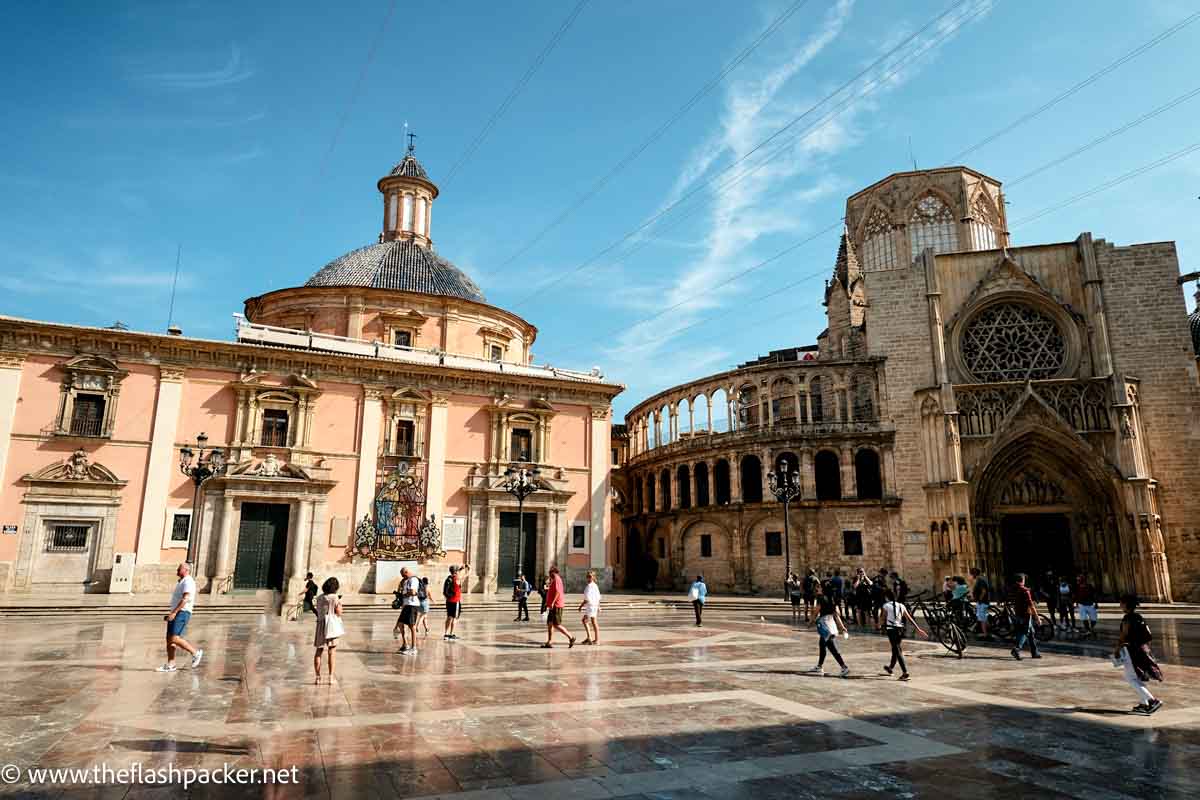
Valencia wears its rich history well.
Founded by the Romans in 138 BC, Valencia was subsequently invaded by the Vandals and then the Visigoths. In the 8th Century, the city surrendered to the Moors and became known as Balansiya.
Fast forward to 1238 and Valencia fell to the army of King James I of Aragon. Fifty thousand Moors fled and the city regained its original name.
The 15th Century was Valencia’s golden age. Arts and culture flourished and many of the city’s most important landmarks were built, including the Micalet, the Silk Exchange and the Serranos Towers.
2. It has a majestic cathedral
Valencia’s majestic Cathedral–Basilica of the Assumption of Our Lady of Valencia is a perfect encapsulation of the city’s history.
This has been a place of worship for over 2,000 years. The cathedral was built on the site of a Roman temple, then a Visigoth cathedral, and later a mosque
Constructed over 750 years, the result is a mish-mash of architectural styles. Although Valencia Cathedral is essentially Gothic in all of its pointy splendour, it also includes early Romanesque, Renaissance and Baroque elements.
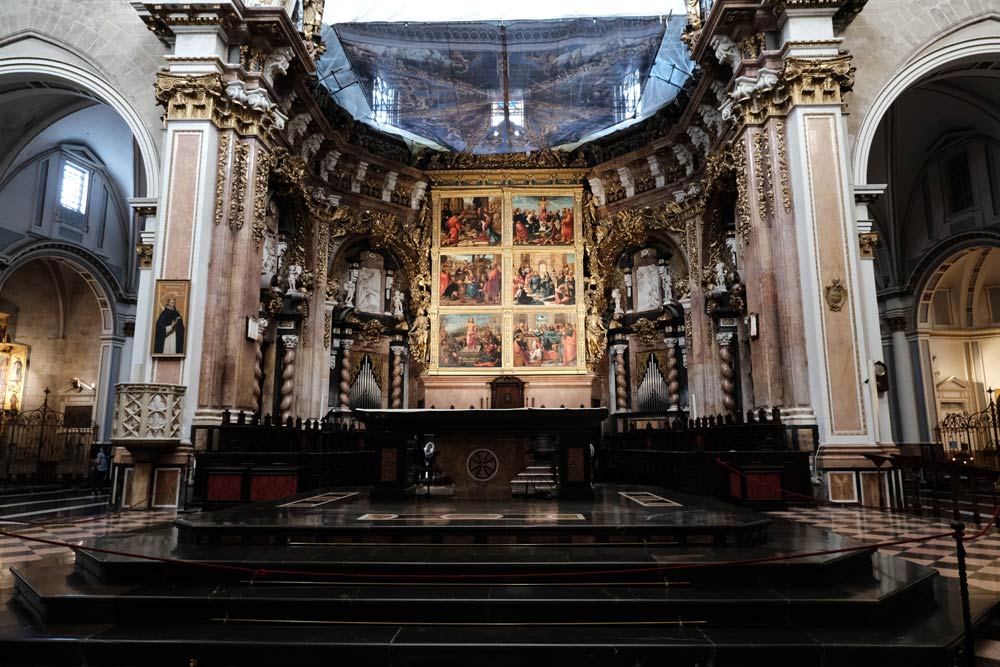
Take a look at the cathedral’s doorways, for example.
The oldest of these doorways, the Palau Gate is pure Romanesque with its gently- rounded arch featuring a rich variety of ornaments. By contrast, the Gothic Apostle Door, facing the Plaça de la Verge, features limestone sculptures of six apostles resting on delicately carved filigree columns.
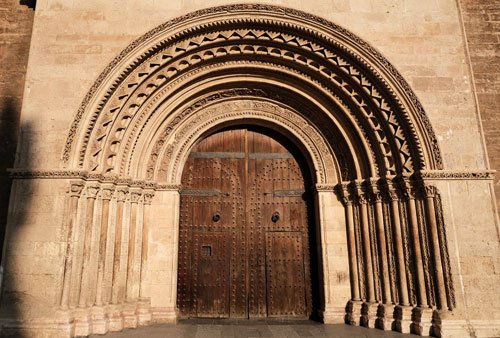
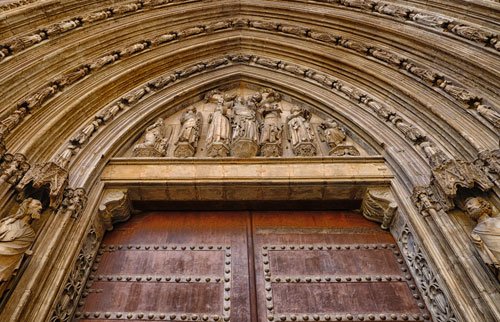
Finally, with its flamboyant sculptures, the 18th Century Baroque Iron Gate, wouldn’t look out of place in Italy.
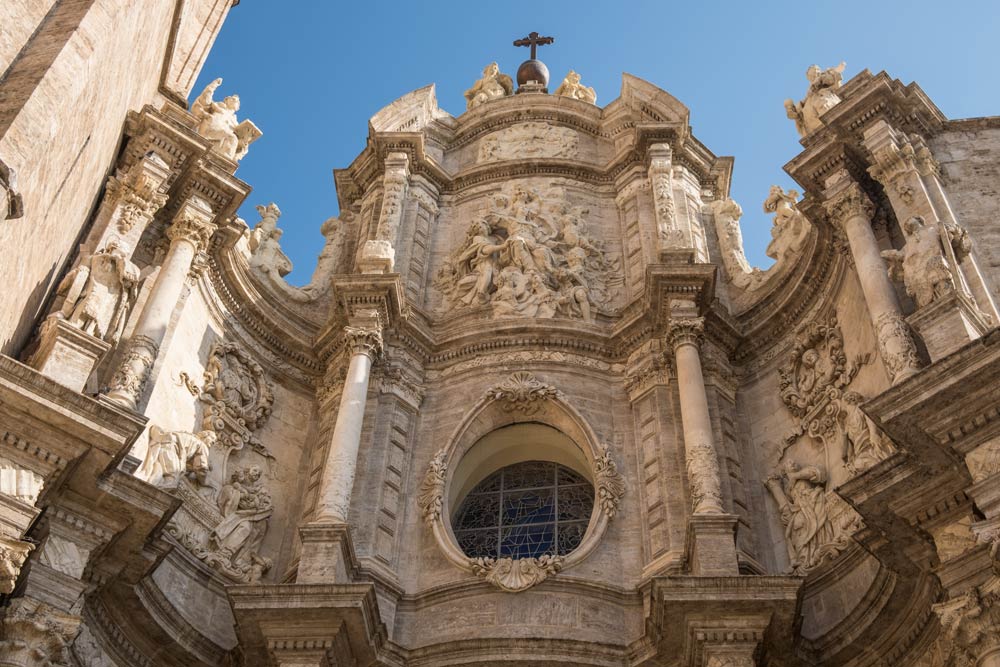
3. Valencia Cathedral houses the Holy Grail (maybe)
Valencia Cathedral is also home to a chalice, believed by many to be the true Holy Grail.
Housed in a serene chapel, featuring an exquisite alabaster altar, this chalice with Arabic inscriptions dates from the 1st Century. Adding strength to its claim to be the true Holy Grail, it has been used by many popes including the current Pope Benedict XVI.
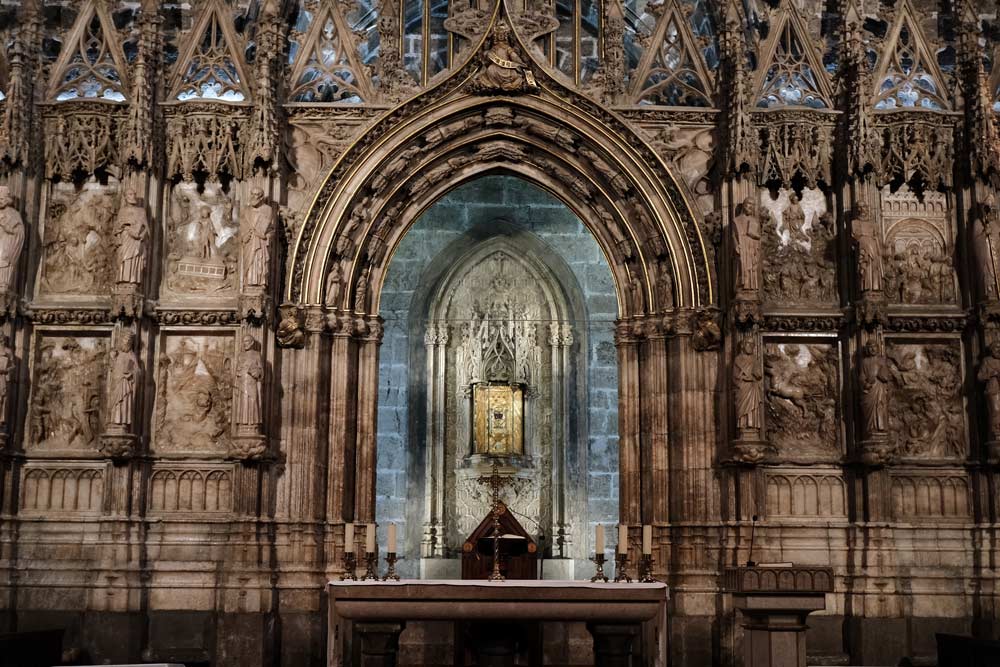
4. To visit the Church of San Nicolás, Spain’s Sistine Chapel
But the cathedral isn’t the only sacred place in town when you are visiting Valencia.
Take time to stop by the Church of San Nicolás and San Pedro Mártir, one of the city’s sparkling jewels. One of the first parish churches in the city, recent restoration has revealed rich fresco paintings.
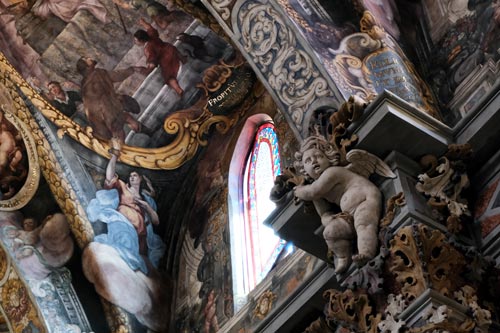
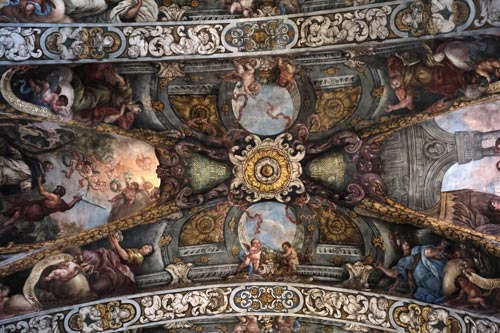
5. For its UNESCO World Heritage Site of la Lonja de la Seda
Valencia’s historical legacy is also preserved in its extraordinary Lonja de la Seda (Silk Exchange).
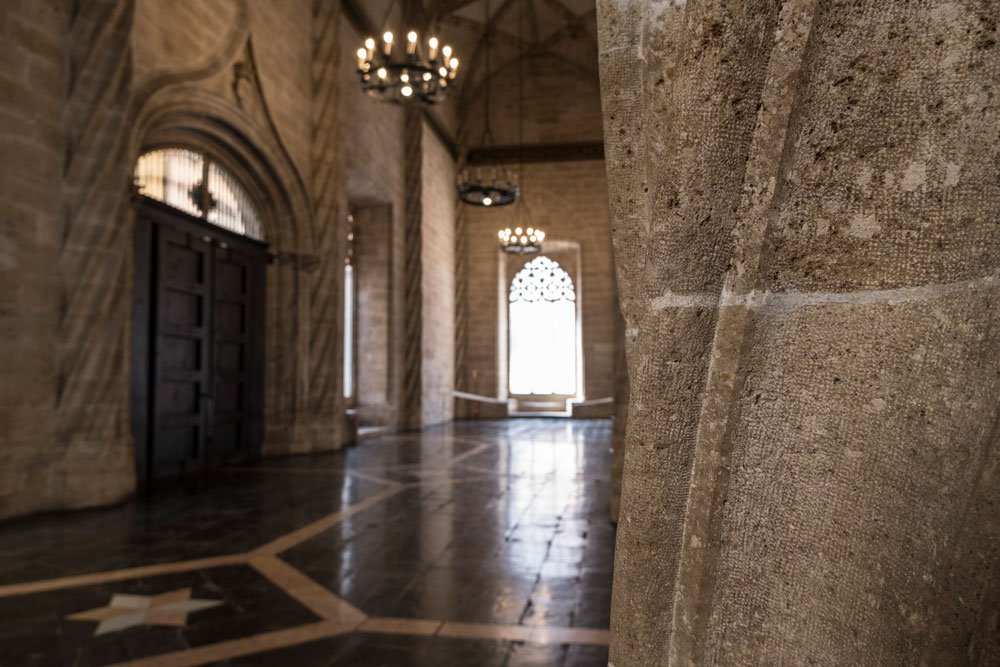
Built between 1482 and 1533, this group of buildings was a centre for commerce, primarily for trading in silk. It earned its UNESCO status as an outstanding example of a civic Gothic building.
The magnificent Trading Hall reflects the power and wealth of Valencia in the 15th and 16th centuries. Its eight spiral columns open up like palm trees against a ceiling that was originally painted with stars, said to represent trading paradise.
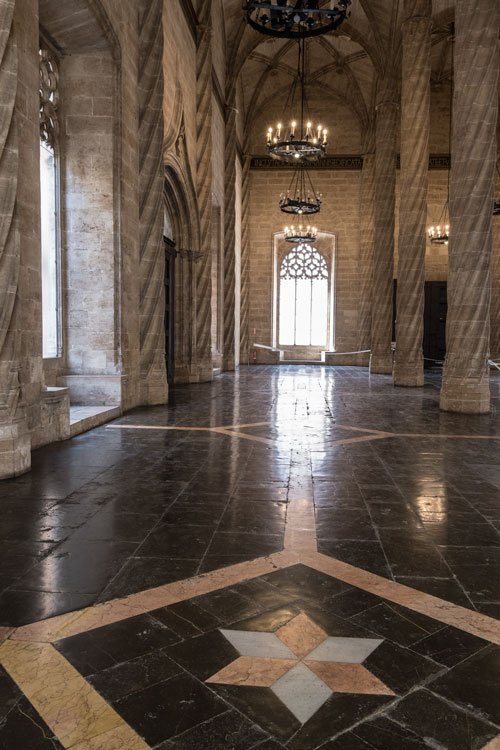
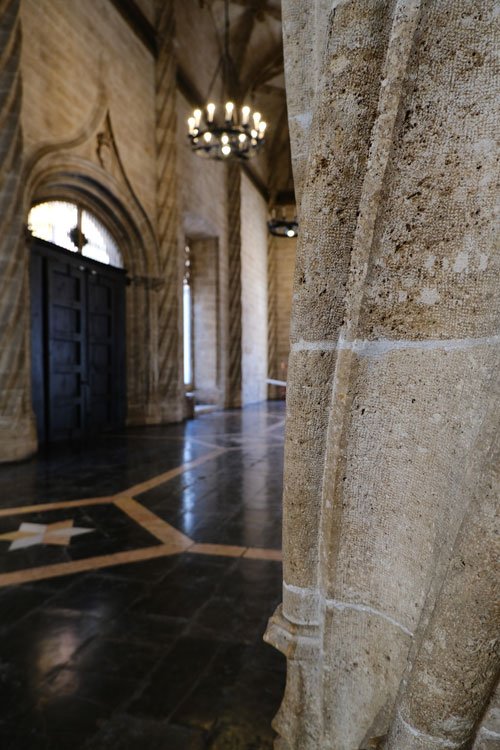
6. To climb the Serranos Towers
Another of Valencia’s landmarks, the Serranos Towers formed the main entrance to the city from the north.
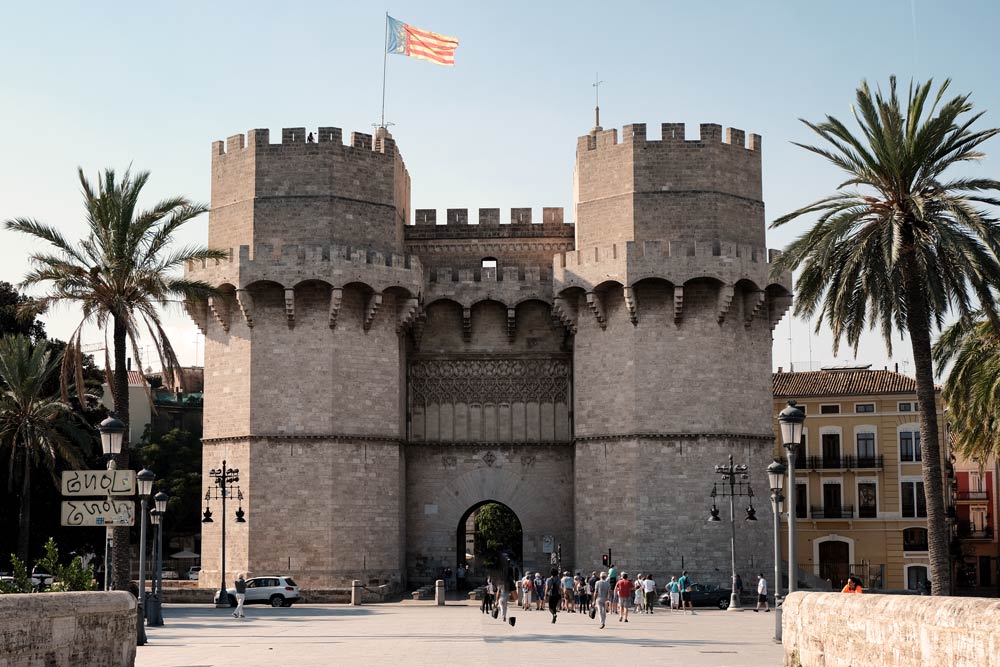
These late 14th Century towers were built primarily as a fortress, forming part of the city’s defensive walls. The city walls have long since gone but two of its gates remain: Torres de Serranos and the Torres de Quart to the west.
Climb to the top of the Serranos Towers for stellar views over the medieval city and the Jardines del Turia (Turia Gardens).
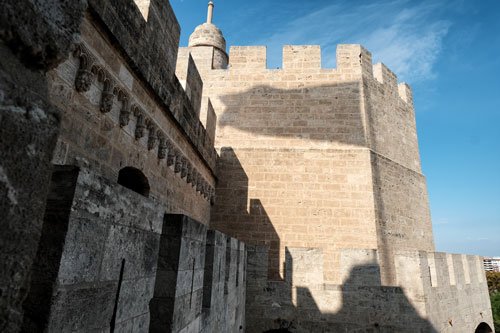
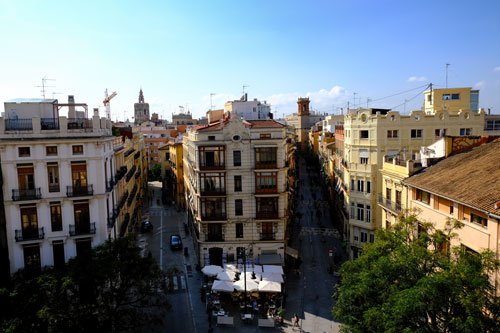
7. To see a river that isn’t a river
Let’s talk more about the Turia Gardens.
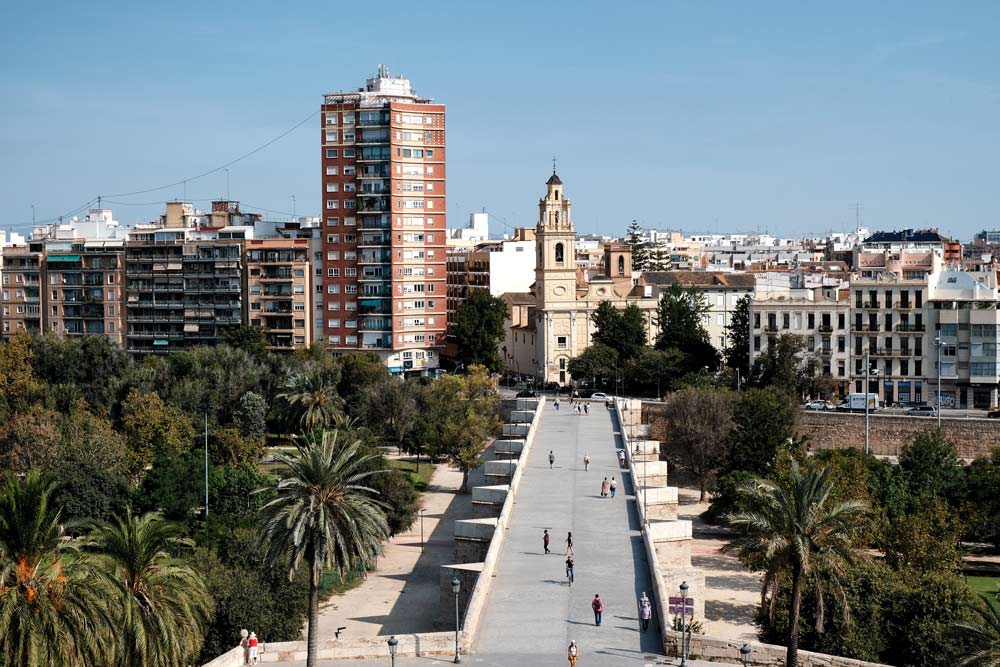
Once upon a time, the River Turia flowed through the centre of Valencia. However, in the wake of a catastrophic flood in 1957, the river was diverted to the city’s outskirts and the former riverbed was converted into a glorious 9 km park.
Criss-crossed by 18 bridges, the Turia Gardens is one of the largest urban parks in Spain and a locals’ favourite.
8. For its striking modern architecture
Valencia’s buildings speak of more than its medieval roots. The city is home to some of the most striking architecture in the country, from Art Nouveau to Modernista to futuristic buildings.
The poster child of modern architecture in Valencia is the Ciudad de las Artes y las Ciencias (City of Arts and Sciences). Designed by local boy Santiago Calatrava, its genesis wasn’t trouble-free. Construction costs spiralled to €1 billion, four times over budget.
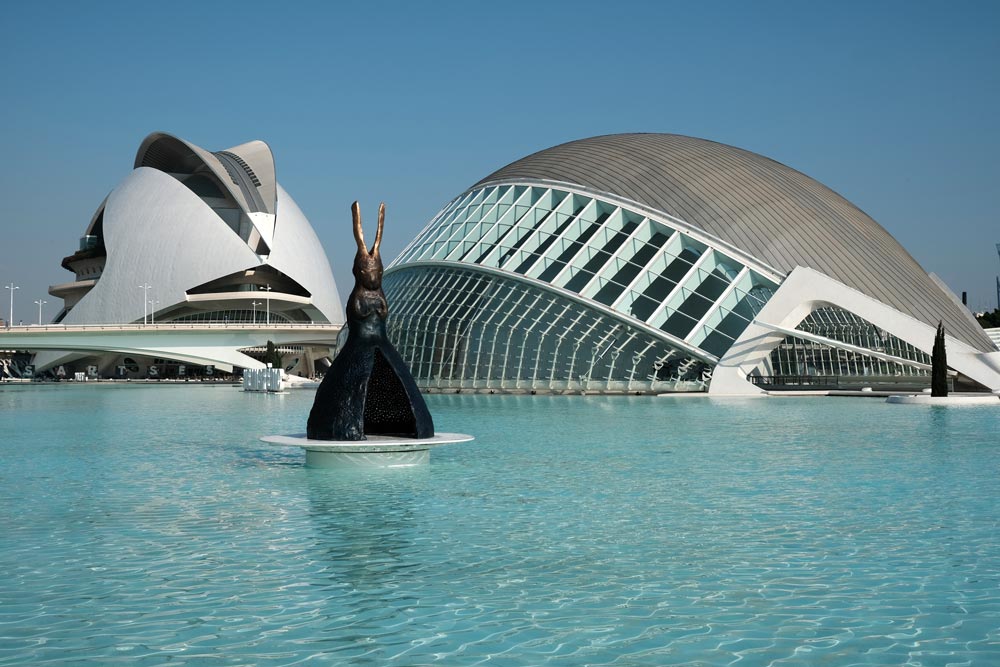
Visit the City of Arts and Sciences to decide for yourself if it is worth this astronomical cost.
The complex houses the following attractions:
- Hemisfèric; an IMAX and 3D cinema
- Museu de les Ciènces; an interactive science museum
- Oceanogràfic; Europe’s largest aquarium
- Palau de les Arts; an opera house and cultural centre
- L’Umbracle; a gardened esplanade with indigenous plant species
>>> SKIP THE LINE & BUY YOUR OCEANOGRÀFIC TICKET HERE
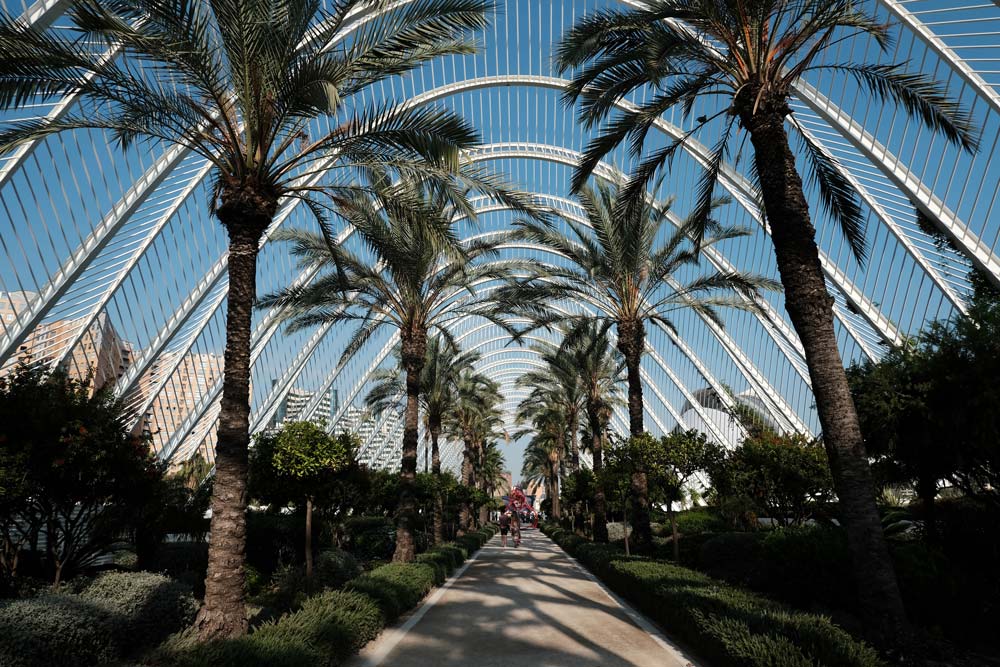
9. Valencia is home to two magnificent markets
Yes; that’s right. The city is home to not one, but two, awesome markets.
Another of the great reasons to visit Valencia.
The best-known Mercado Central (Central Market) is the result of a countrywide architecture competition in the early 1900s. Its vast space, maximised by its sixteen-sided structure, is home to a myriad of stalls and restaurants.
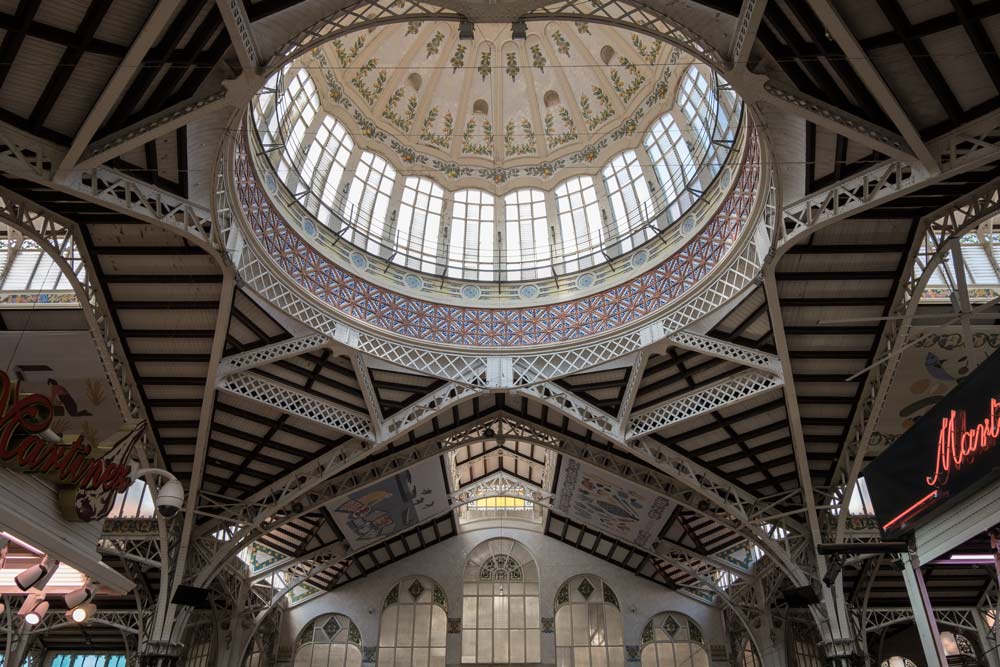
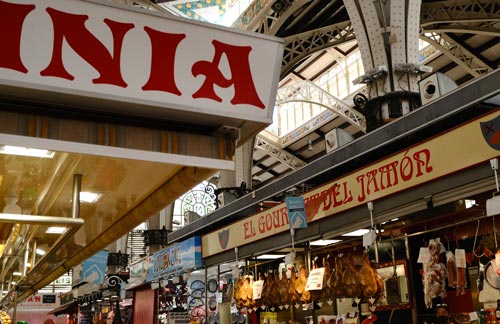
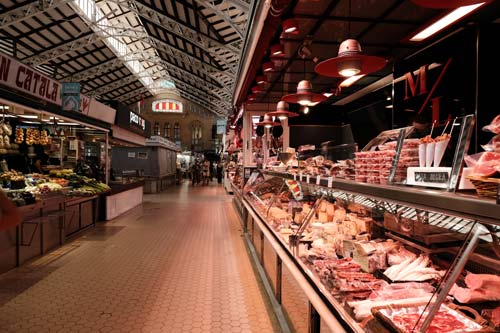
But don’t miss the Mercado Colon (Colon Market).
Designed by Francisco Mora Berenguer and opened in 1912, this is a fabulous example of Valencian Art Nouveau. Many of its features will be recognisable if you have visited the Sagrada Família or any of Gaudi’s other buildings in Barcelona.
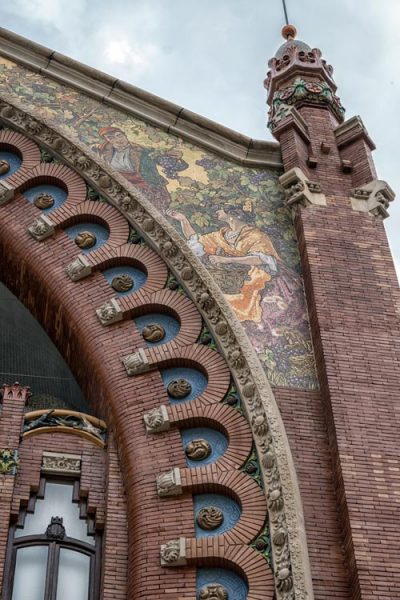
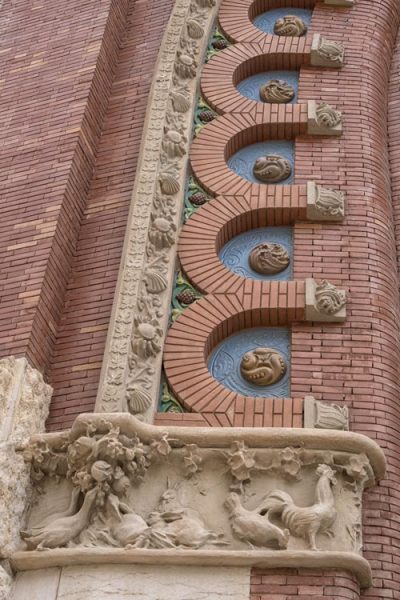
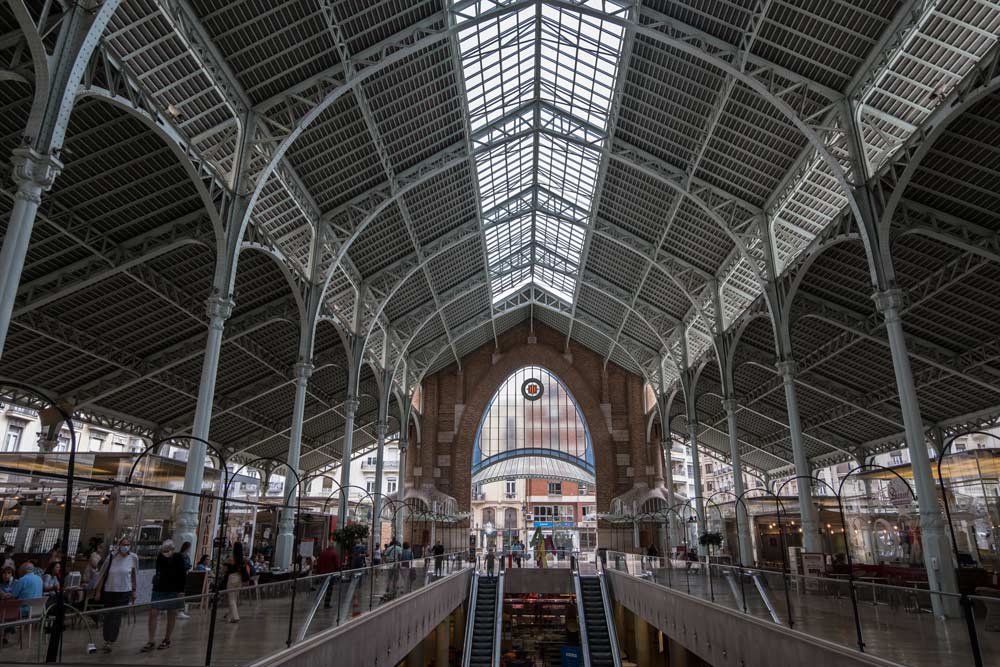
10. It has one of the most beautiful train stations in Europe
Valencia’s main railway station, Estacio del Norte, is another Art Nouveau masterpiece.
Built between 1906 and 1917 by Valencian architect Demetrio Ribes, the building is decorated with beautiful ceramic tiles and mosaics inside and out.
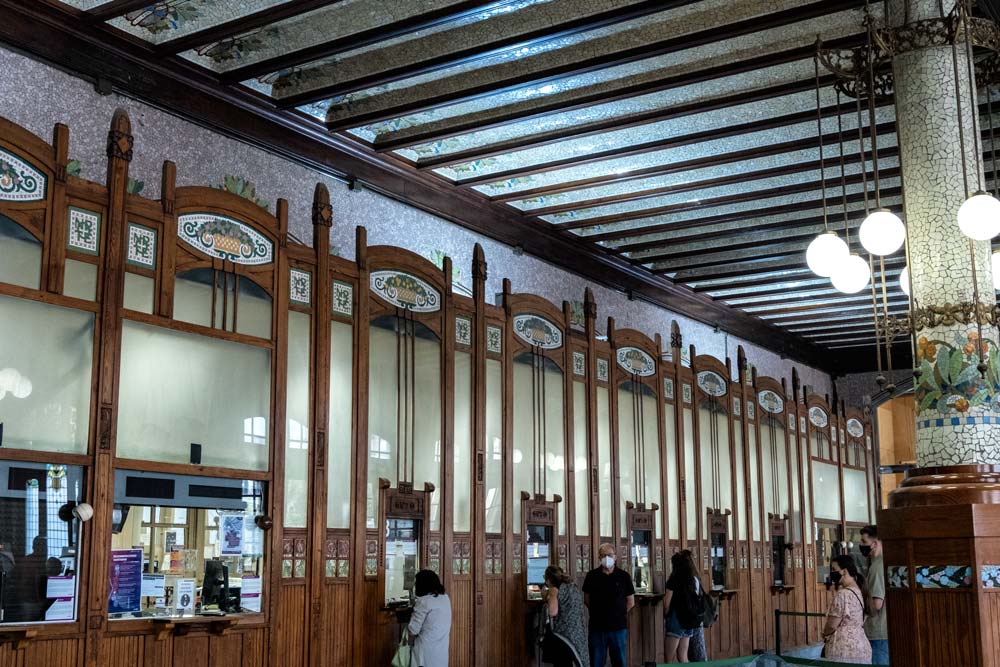
11. Visit Valencia for its funky street art
The epicentre of Valencia’s street art scene is the El Carmen quarter of the old city.

Artists such as Julieta XLF, Escif (the so-called Spanish Banksy) and Deih have created vibrant, and often provocative, street art to spice up the city’s streets. To gain a better understanding of Valencia’s street art, join one of the two-hour free street art tours that operate twice a week.
12. To eat authentic paella
Valencia is the undisputed home of paella.

Originally a lunchtime food for farmers and farm labourers, this dish has come to typify Spanish cuisine like no other. Whilst paella is now a generic term for a variety of rice-based dishes, traditional Valencian paella has no seafood but a mixture of chicken, rabbit and beans.
Valencia’s locally-grown rice is super tasty because of the minerals in the water. Don’t leave the city without trying paella.
13. It has a wonderful climate
Valencia has pretty much a perfect climate.
With over 300 days of sunshine a year, little rain and mild winters, there’s a very good chance that you’ll be sitting under clear blue skies at any time of the year. All the better for enjoying its urban beaches or lingering over long outdoor lunches.
14. Valencia is a relatively cheap city to visit
Valencia is one of the best Spanish cities to visit if you are on a budget or on a solo trip.
One of the disadvantages of travelling alone is that it can be relatively expensive. Thus, affordability can play a big part in choosing the perfect solo travel destination.
There are plenty of inexpensive things (or even free things to do). Accommodation is plentiful and relatively cheap and the menu del dias offered by many of the city’s restaurants help your money stretch further.
These lunch deals are available from 1.30 to 4 pm and typically include your choice of drink, bread, a starter, an entrée plus a dessert or coffee.
15. Valencia is a relatively safe Spanish city
Valencia is not only one of the best solo travel destinations in Spain but also a perfect place to visit if you are travelling alone in Europe.
Safety as a solo traveller is a particular concern for women travelling alone. Whilst you shouldn’t be complacent, you don’t have to be as concerned about petty crime in Valencia as you would in other countries, or even in some other cities in Spain.
Use your common sense. Share your itinerary with someone back home, keep an eye on your belongings, drink alcohol in moderation and, your visit to Valencia should be trouble-free.
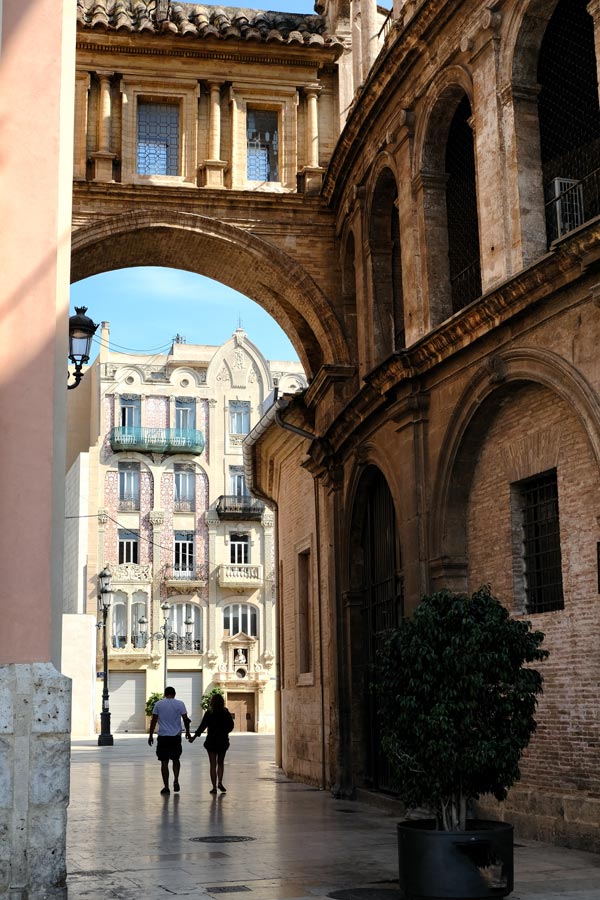
Plan Your Visit to Valencia, Spain
When to visit Valencia
Due to its balmy climate, Valencia is a year-round destination.
The warmest and longest days are between March and October. However, I would avoid July and August which are busier and hotter.
I visited in late September and the temperature was perfect.
If you plan to visit Valencia in March, try to coincide your visit with the Las Fallas festival. One of the things that Spain is famous for is its vibrant festivals and Las Fallas is one of the most popular. It takes place between the 1st and 19th of March each year.
How many days should you spend in Valencia?
At a minimum, I recommend spending two days in Valencia. This will allow you to see the city’s highlights with relative ease.
How to get from Valencia Airport to the city centre
It’s super easy to get from the airport to the city centre by public transport.
Metro lines 3 and 5 will take you directly from the airport to the city centre, a journey time of between 30 and 45 minutes. Buy your ticket from the machine at the airport.
Getting around Valencia
If you are spending just a few days there, you’re unlikely to need to use Valencia’s public transport frequently. Most of the tourist parts of Valencia, including the old city, are very walkable.
The city’s Metro system is useful for getting to and from the airport and for travelling between neighbourhoods. You are likely to hop on one of the city buses to reach the City of Arts and Sciences.
For a hassle-free way of getting around town, jump on the hop-on-hop-off (HOHO) bus. Choose between 24- or 48-hour tickets, covering 17 stops.
>>> CLICK HERE TO BUY YOUR HOHO BUS TICKET
Another popular option is to rent a bike.
>>> BOOK A 3-HOUR GUIDED BIKE TOUR HERE
Exploring Valencia on a guided tour
When I visited Valencia, I joined a two-hour walking tour
Joining an organised tour can be a fabulous way to become acquainted with a new city, and benefit from your guide’s local tips. And if you are travelling alone, especially as a first-time solo traveller, it’s an excellent way to meet people whilst travelling.
I use and highly recommend using GetYourGuide to source and book day excursions. Not only does the platform offer an extensive selection of tours from independent operators, but there is also a very generous cancellation policy.
Here is a selection of activities that are worth a closer look:
Valencia walking tour
This 2-hour guided walk covers many of Valencia’s must-see attractions mentioned in this article.
>>> CLICK HERE TO BOOK YOUR TOUR
Old Town tour with wine & tapas
This guided walking tour through the Old Town includes exclusive access to an 11th-century historical monument where you can feast on a 10-course tapas meal washed down with regional wines.
>>> CLICK HERE TO BOOK YOUR TOUR
Tuk-Tuk tour of Valencia
For a fun way of exploring Valencia, take this tuk-tuk tour. The focus of this guided tour is sights outside of the Old Town, including Malvarrosa Beach and the City of Arts and Sciences.
>>> CLICK HERE TO BOOK YOUR TOUR
Where to stay in Valencia
To make the most of a short stay in Valencia, base yourself in the old city. Here are a few recommended choices.
Mid-range: Hostal Antigua Morellana
I stayed at this traditional family-run guesthouse in the heart of the old city. Highly recommended for its ideal location and helpful staff and owners, all at an excellent price point.
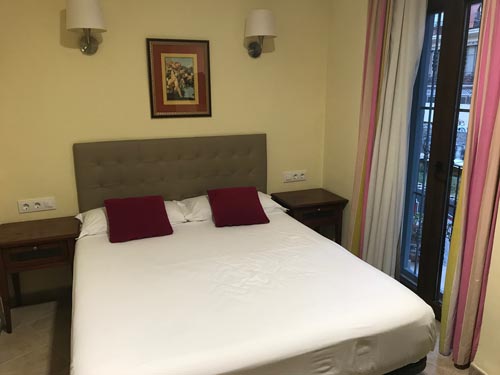
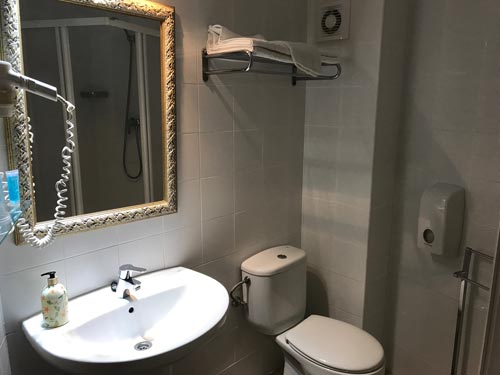
>>> CLICK HERE TO CHECK RATES & BOOK
Splurge: Palacio Vallier
If you want to push the boat out, take a look at this 5-star Art Deco hotel in the heart of the old city.
>>> CLICK HERE TO CHECK RATES & BOOK
>>> Neither of these places takes your fancy? Discover other great accommodation choices in Valencia.
Is the Valencia Tourist Card worth it?
Like many cities, Valencia offers a tourist card that offers free public transport within the city centre plus complimentary entry or discounts at key attractions and restaurants.
The Valencia Tourist Card is valid for 24, 48 or 72 hours and the price starts from €15. As with any of these tourist cards, its value will be determined by how you intend to spend your time in the city.
Based on what I did, it would not have represented good value. But if you are planning to cram in loads of paid attractions, it may be worth your while.
As they say, do the maths (or math if you are American).
Why I Loved Valencia
Although Valencia isn’t my favourite Spanish city – that accolade goes to Seville – it bowled me over.
It’s far less touristy than either Barcelona or Madrid and attracts a fraction of those cities’ crowds. Valencia has enough to attract the most ardent history and architectural buffs; there are enough attractions to keep you busy for many days.
It has a superb climate and, if you fancy a bit of beach time, a short journey on the city’s excellent public transit system will have you soaking up the sun on the sand in no time. Lastly, Valencia’s affordable bars and restaurants are excellent places to absorb its laid-back vibe.
Visit Valencia before the tourist mobs descend.
DISCOVER MORE ABOUT SPAIN!
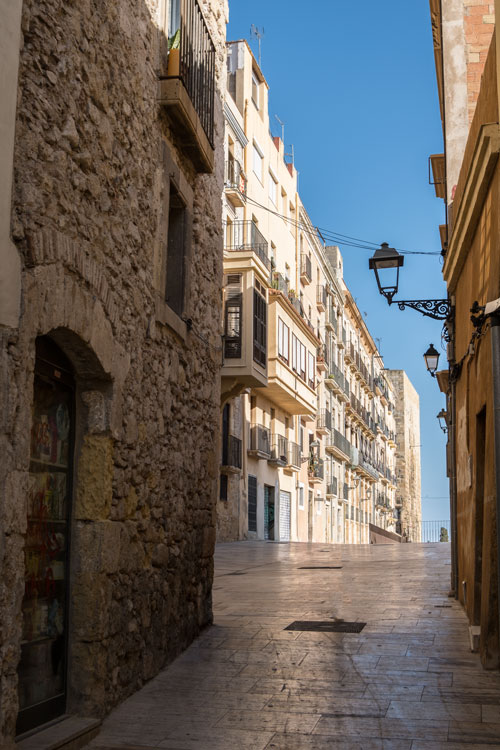
- What is Spain Famous For? 20 Reasons to Visit Spain
- 2 Days in Barcelona: Itinerary & Best Things to Do
- One Day in Barcelona from a Cruise Ship: Itinerary & Best Things to Do
- Top 10 Things to Do in Tarragona: Spain’s Roman City by the Sea
- Tips for Visiting Sagrada Família: Things You Should Know Before You Go
- One Day in Palma de Mallorca, Spain
- 15 Fabulous Reasons for Visiting Valencia, Spain
- Solo Travel in Portugal and Spain: 10 Unmissable Places to Visit
- The Ultimate One-Week Tenerife Itinerary & Guide
- 10 Best Things to do in Puerto de la Cruz, Tenerife
- Exploring Tenerife by Bus: TITSA Buses Made Easy in 2022

About Bridget
Bridget Coleman has been a passionate traveller for more than 30 years. She has visited 70+ countries, most as a solo traveller.
Articles on this site reflect her first-hand experiences.
To get in touch, email her at hello@theflashpacker.net or follow her on social media.
